Jubilation, H.M. Bateman, 1924
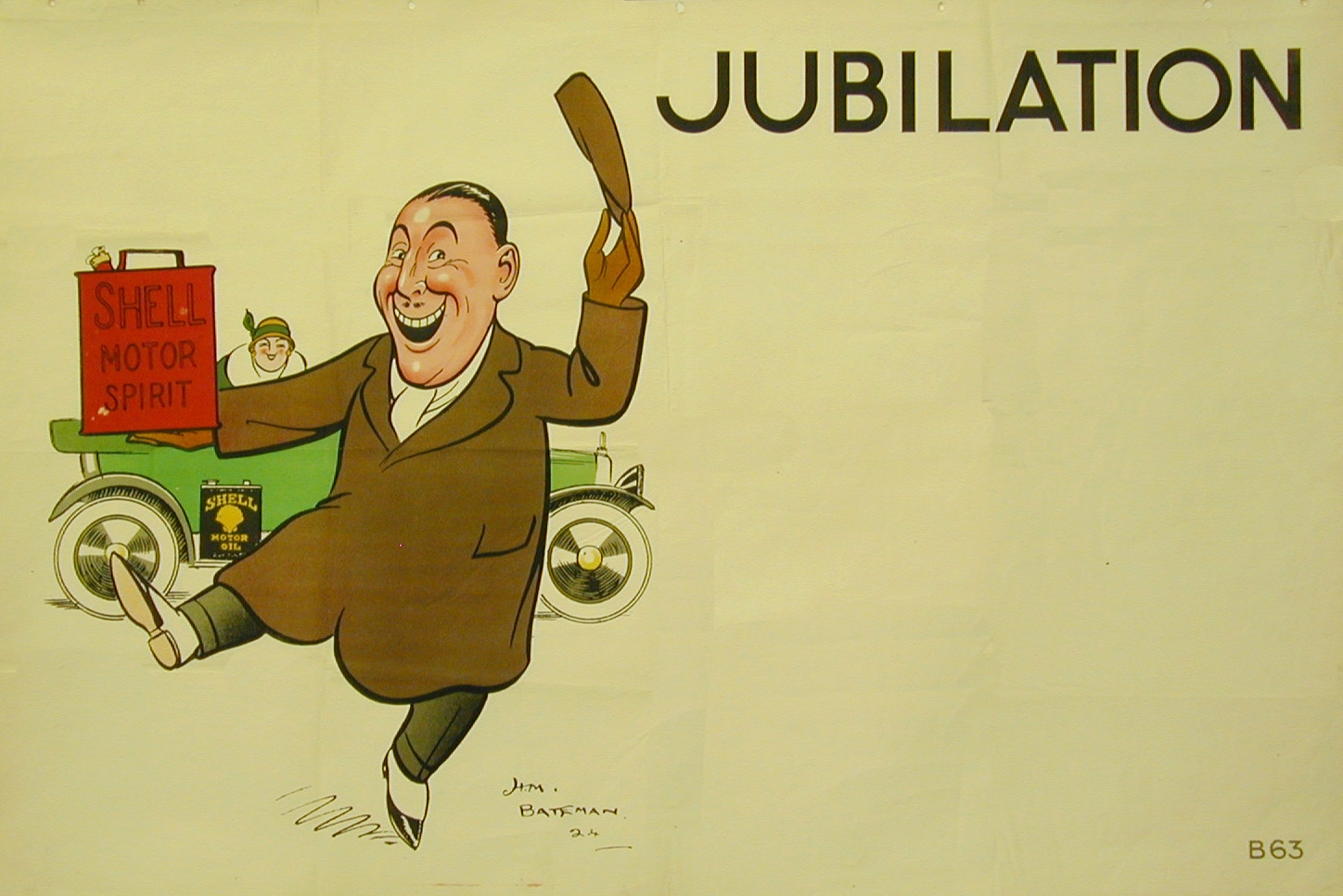
Henry Mayo Bateman (1887-1970) was an Australian cartoonist, whose drawings for the magazines Tatler and Punch made him one of Britain’s leading cartoonists of the early 20th century. The illustrations in this poster series by H.M. Bateman were also used for an early animation film.
I Must Have Shell, Shell Studio, 1925

Most of Shell’s posters in the 1920s were produced in the Shell Studio by unknown artists. They were bright and colourful and used humour and cartoons to appeal to all ages.
Your Car Deserves Them Both, René Vincent, 1926
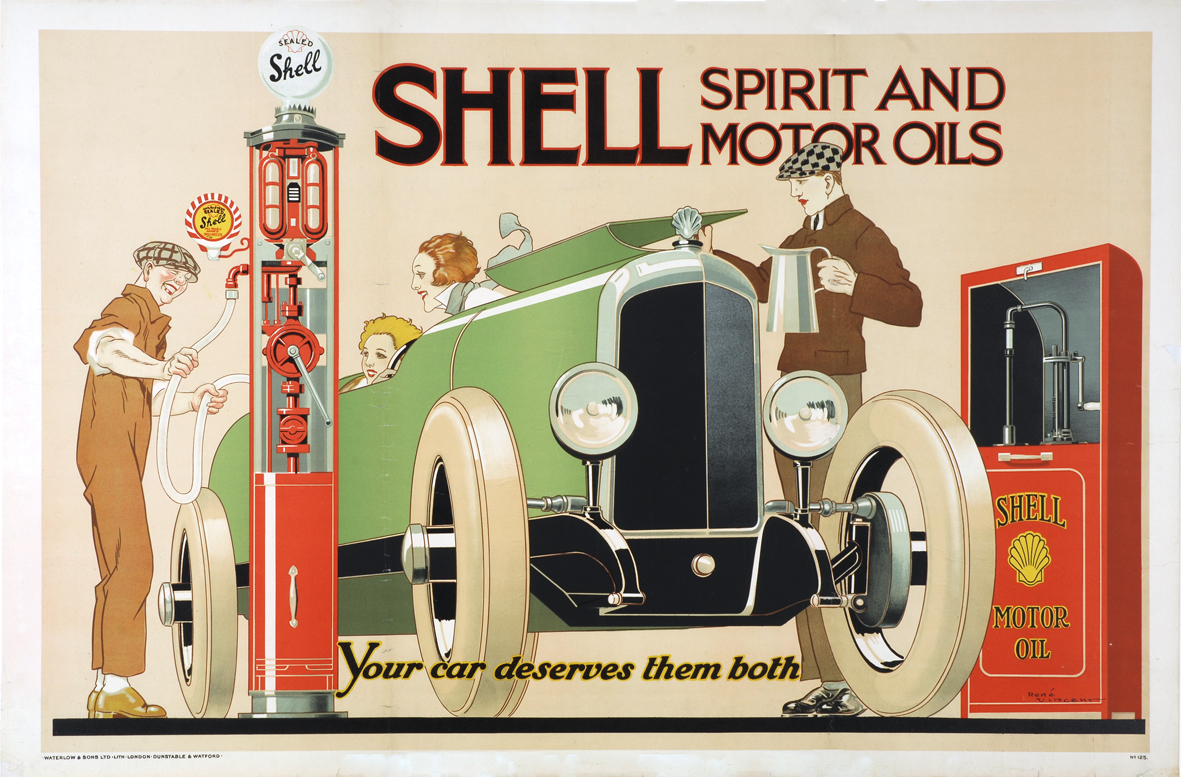
The artist René Vincent (1879-1936) designed many famous posters in the 1920s. One of his favourite subjects was the automobile, perhaps because he was one of the first people to hold a driving licence. From its earliest advertising, Shell characterised women in a positive way, often showing them in the driving seat of the car.
Shell Lubricating Oil, Marc, 1928

The Quick Starting Pair - Newsboys, Charles Paine, 1928
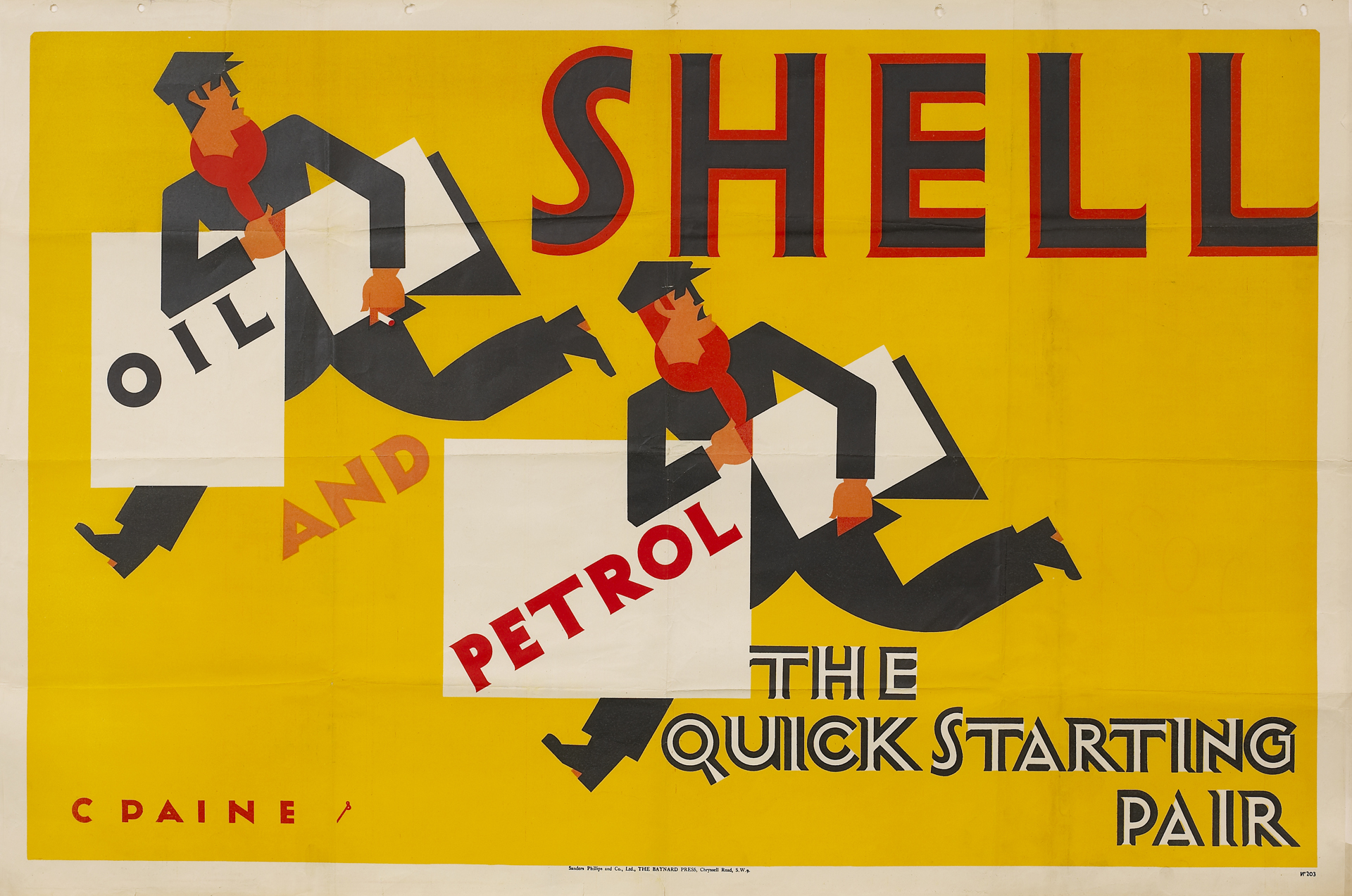
The snappy slogan “The Quick Starting Pair” refers to Shell oil and petrol. This poster was one of a series that used symbols of racehorses, skiers, otters and fleas to illustrate the qualities of Shell products.
Alfriston, Vanessa Bell, 1931
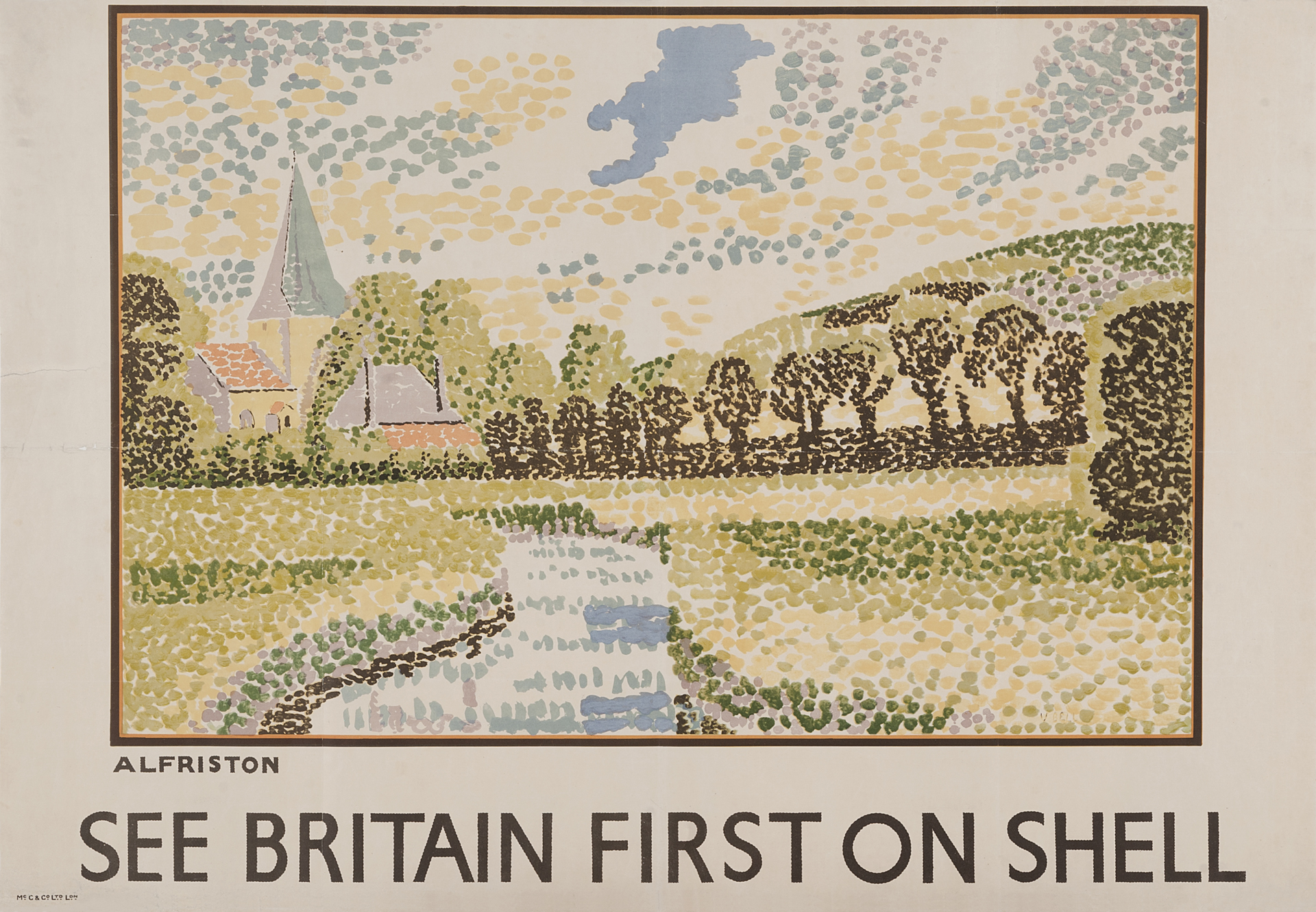
Vanessa Bell (1879-1961) was a painter and designer. She was the elder sister of author Virginia Woolf. In 1907 she married the art critic Clive Bell, and later lived with the artist Duncan Grant. Their home became a centre for the Bloomsbury circle of writers and artists. “See Britain First on Shell” was a prominent advertising campaign in the 1920s and 1930s. Motorists were encouraged to get out in their cars and explore the wonders of the countryside.
The Rye Marshes, Paul Nash, 1932
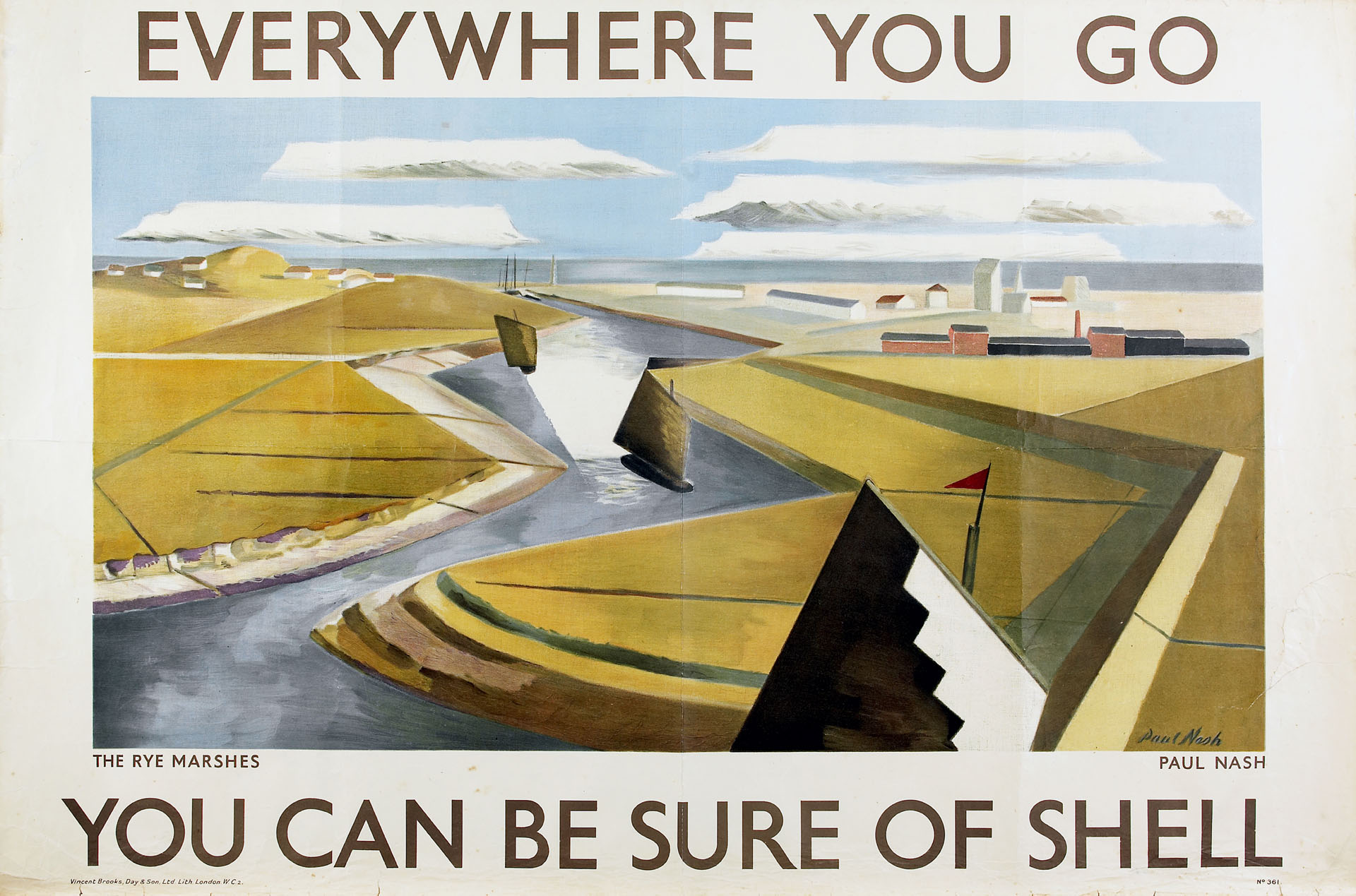
Paul Nash (1889-1946) gained early recognition as a landscape artist and became a member of several influential groups. During the 1930s, Nash produced three posters for Shell, and in 1936 wrote the Shell Guide to Dorset. Shell’s most prominent campaign of the 20th century was one centred on Britain, encouraging motorists to get out in their cars and explore the British countryside.
Crikey! Loch Ness Monster, John Reynolds, 1933

The original design for this campaign appeared in a newspaper advert with only one head. A member of the public drew another head on to the picture and sent it to Shell. The idea was so popular it was used for over 20 years. John Reynolds (1909-1935) was the son of an art editor of Punch. He was a book illustrator and cartoonist, best known for his illustrations of ‘1066 And All That’ (1930).
Motorists Prefer Shell, John Stewart Anderson, 1935
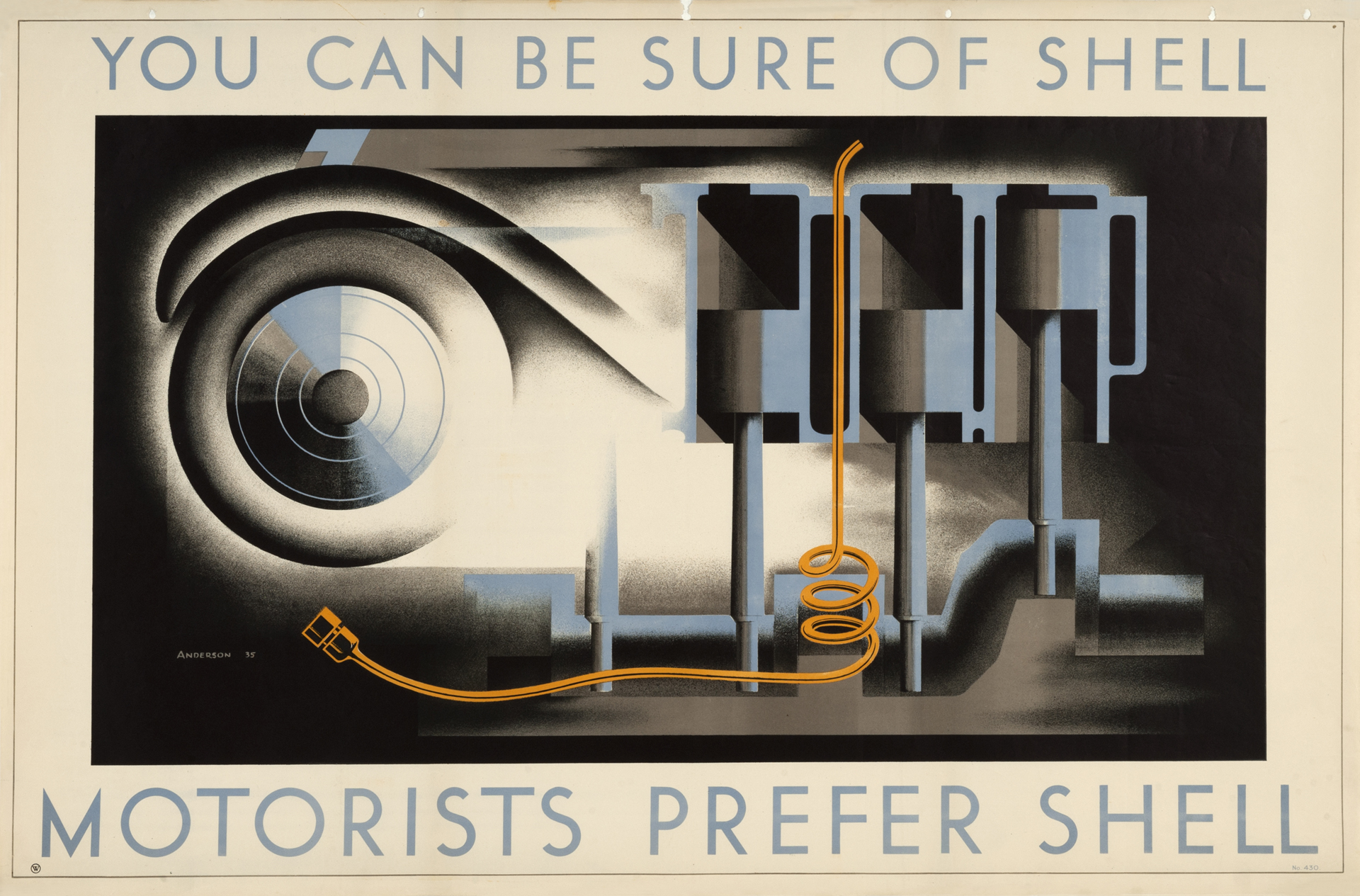
A popular theme that appeared in Shell advertising claimed that all sorts of people preferred and used Shell, from theatre-goers to motorists and gardeners.
Why is Shell Not What it Was?, Thomas Gentleman, 1936
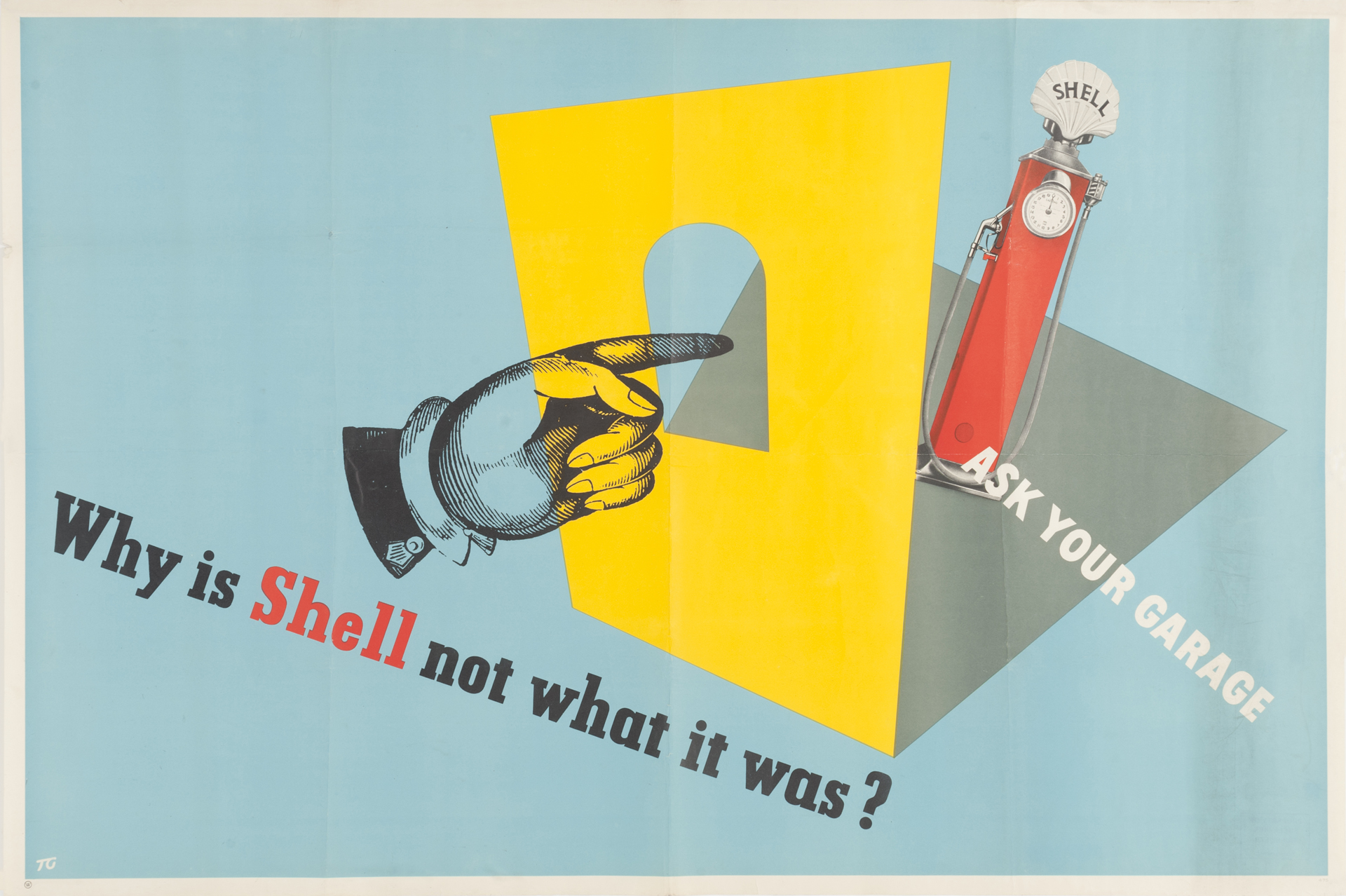
Thomas Gentleman (1892-1966) was a Scottish painter and commercial artist. From 1932, Gentleman worked in the design studio for Shell, becoming the Studio Manager in the 1950s. Shell’s advertising in the 1930s rarely illustrated the product, but instead conveyed simple messages around the pleasures of motoring. This poster, however, promotes Shell’s innovations in fuel and petrol pumps at the time.
Journalists Use Shell, Hans Schleger (ZERO), 1938
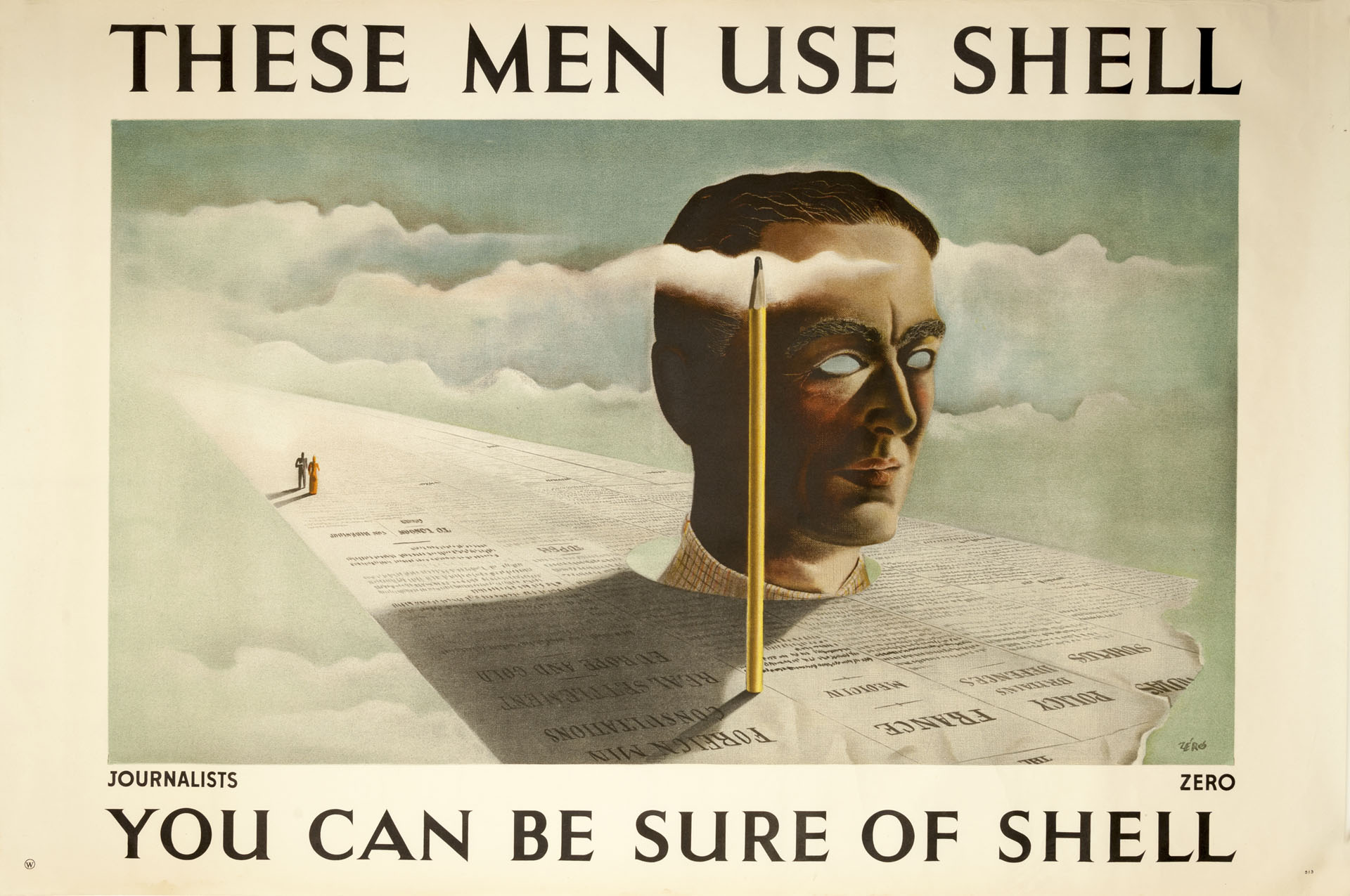
Hans Schleger (1898-1976), who often signed his work as “Zero”, was a graphic artist and designer specialising in commercial art and poster design. From the 1920s to the 1950s, Shell commissioned both known and unknown artists to produce works for their advertising posters, helping to make art more accessible to the British public.
New Shell Lubricating Oils, Edward McKnight Kauffer, 1937
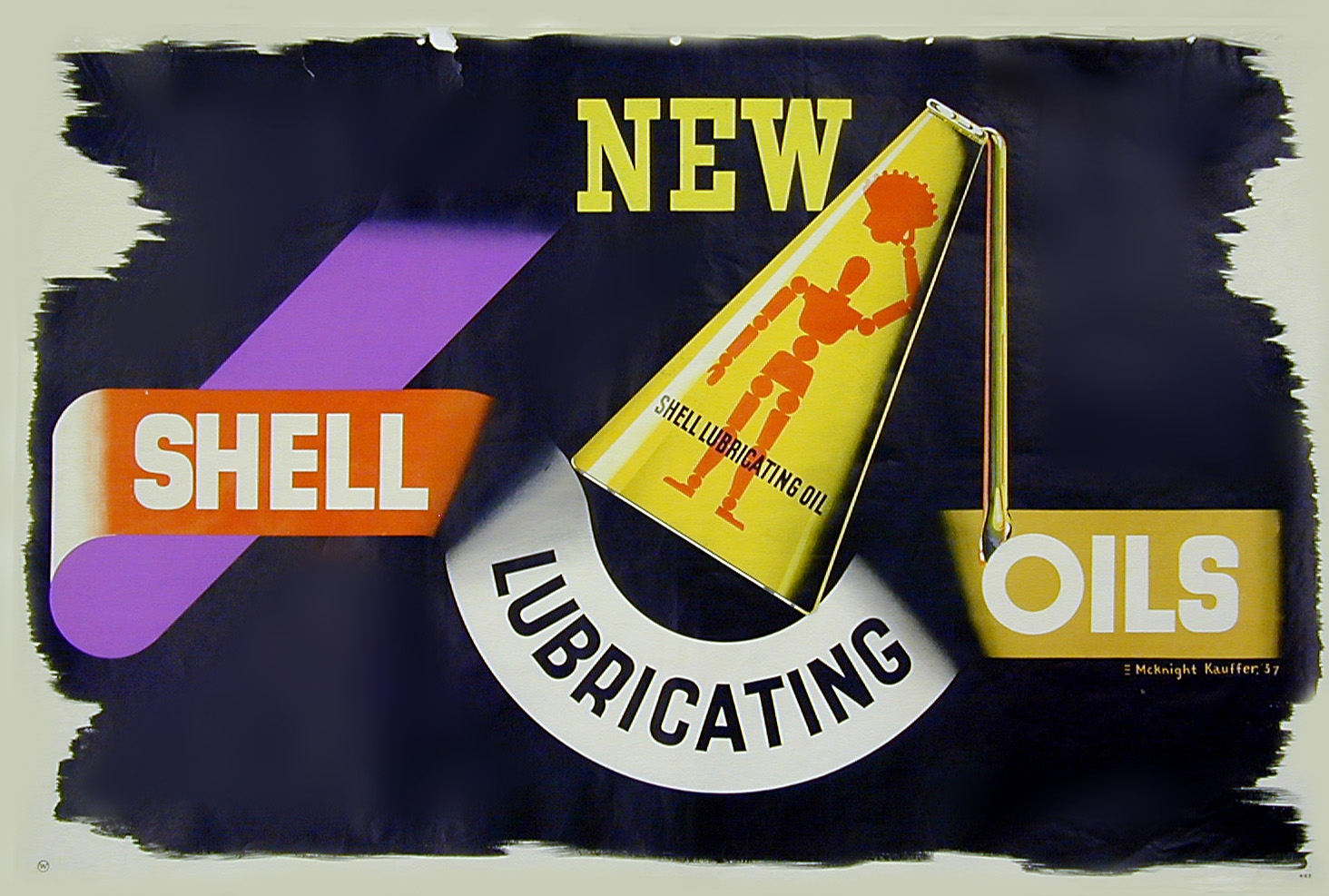
Edward McKnight Kauffer (1890-1954) was one of the most influential graphic designers of the 20th century. He produced more posters for Shell than any other artist. Kauffer created the jointed man, as seen in this poster. The design was used on all Shell oil lubricating products at the time.